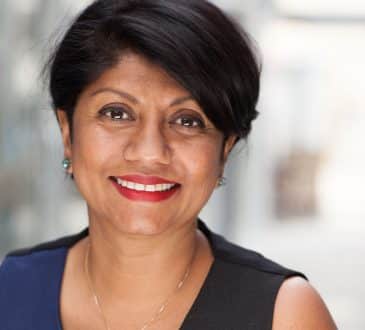The most powerful everyday habit for finding focus: Develop creativity

Few things induce panic like the proverbial blank page. Even the most seasoned professional might look like a deer in the headlights when asked to come up with ideas – especially if they’re put on the spot. What this means, in practice, is that most of us have a fairly sizable fear of creativity. Yet, what’s strange is that for most of us this hasn’t always been the case.
As a child, you likely enjoyed creativity – whether that be doodling, painting or playing games of make believe. Perhaps this is why some people wrongly believe creativity is something unimportant and frivolous. They write it off as childish, or the sole remit of bohemian artists – but this couldn’t be further from the truth.
When you look at the research, the correlation between creativity and success is undeniable. 85% of professionals consider creative thinking crucial for problem-solving in their work – and creativity has even been shown to boost confidence, engagement and knowledge-retention in students. Obviously, it’s undeniable that – as a skill – creativity is beneficial for both individuals and businesses in terms of attaining major goals. Yet, something we don’t often consider is its potential role in improving our focus.
Still, before we can look at that, we need to better understand why exactly we lose our connection to creativity as we age. After all, this shift is not just anecdotal. Research has long shown that there is a clear decline in creative performance as children grow older and into adulthood.
Take the milestone study by George Land. In this research, Land tracked creative ability in a test group of children who were asked to perform a NASA creativity test as pre-schoolers, then again when they were in middle school, and finally as high schoolers. The results showed that while at the age of four or five 98% of children ranked as highly creative, by the time the children were fifteen that number had dropped to a mere 15%. That’s a significant loss. It seems that as we become more accustomed to society and its norms, we actually haemorrhage creative ability.
Our cultural narrative tends to focus on creativity as a kind of genetic black and white – like being able to roll your tongue, many people act as if it’s something you either have the ability to do or not. This is what made Land’s study so remarkable, as it clearly demonstrated that creativity is something inherent within us that is lost through education and conditioning. But this is good news! It means we can relearn how to connect with the creative energy that’s inherent inside of us – and enhance our focus in the process.
Ultimately, this is exactly why creativity is actually correlated with improved focus. If you were to remove all your personal baggage and limiting ideas about your creative ability, you’d soon find that opportunities to be creative are actually joyful and neurologically expansive. In fact, there’s a clear link between creativity and happiness and confidence – and when we’re enjoying our work, attention comes easily. Procrastination is often driven by a sense of displeasure in our work, or a fear that we’re not good enough to do the task at hand.
So, the more pressing question becomes: How exactly do you develop your creative ability? And – well – the answer might just surprise you. You can think of the brain as an idea incubation machine. As human beings, we have an incredible ability to invent, play and generate exciting ideas. Though you might not believe it, this is actually what our brains are predisposed to. The problem is, much in the same way our environment dampens our creative ability as we age, the current status quo in the world of work is actually stifling our innovative ability.
This is due to a phenomenon many have dubbed “Busy Fool Syndrome”. It refers to the current order of things in many a workplace, where fire-fighting and “busywork” is placed above actual productive output. All of us have fallen trap to this at some time or other, multi-tasking and jumping between messages and emails without getting on with what’s in front of us. The trouble is that this way of working actually causes us to prioritise (and even become addicted to) busyness – but this is stifling for our creativity.
To go back to that incubation metaphor for a moment, in order for us to be able to brew up our ideas, we need to give our mind some respite from the demands of continually focussed work. Regular breaks have been consistently shown to boost productivity as well as overall wellbeing – and if you spend those breaks doing the right things, you might just be able to boost the creative ideas you’ll be able to reap later on.
So, what is the right thing to be doing you ask? Well, bizarrely: Nothing at all. Or rather, at least something that leaves the mind free to wander. Daydreaming is actually a crucial neurological function that gives the subconscious time to make the most of all the learnings and information you gather everyday just by nature of being alive. So, by taking time to do something which promotes this cognitive state – whether that be a walk, doodling or even just staring out the window – you will naturally become more creative as a result.
What’s more, you can even learn to focus these creative sessions by spending time wising up in an area you’d like more ideas in – as this provides imaginative fodder for your creative mind to work with. This goes, too, for problem solving. Instead of trying to push through a tricky or complex issue at work, spend some time acquainting yourself with the specifics of the issue and then let it go entirely. It might just surprise you to find that novel solutions strike you at random moments, allowing you to solve even the most complex of problems.
So, by combining regular breaks with daydream sessions you can kill two birds with one stone – super powering productivity, increasing your overall creativity, and learning how to re-engage your focus in the process. By doing work with a creative flair, you can both enjoy it more and achieve better results!
————
Written by Chris Griffiths. He is the co-author with Caragh Medlicott of The Focus Fix: Finding clarity, creativity and resilience in an overwhelming world (Kogan Page).
Have you read?
Best CEOs. Best Companies. Richest People (Billionaires). Richest Women (Billionaires). Richest in Each Country (Billionaires).
Bring the best of the CEOWORLD magazine's global journalism to audiences in the United States and around the world. - Add CEOWORLD magazine to your Google News feed.
Follow CEOWORLD magazine headlines on: Google News, LinkedIn, Twitter, and Facebook.
Copyright 2025 The CEOWORLD magazine. All rights reserved. This material (and any extract from it) must not be copied, redistributed or placed on any website, without CEOWORLD magazine' prior written consent. For media queries, please contact: info@ceoworld.biz








